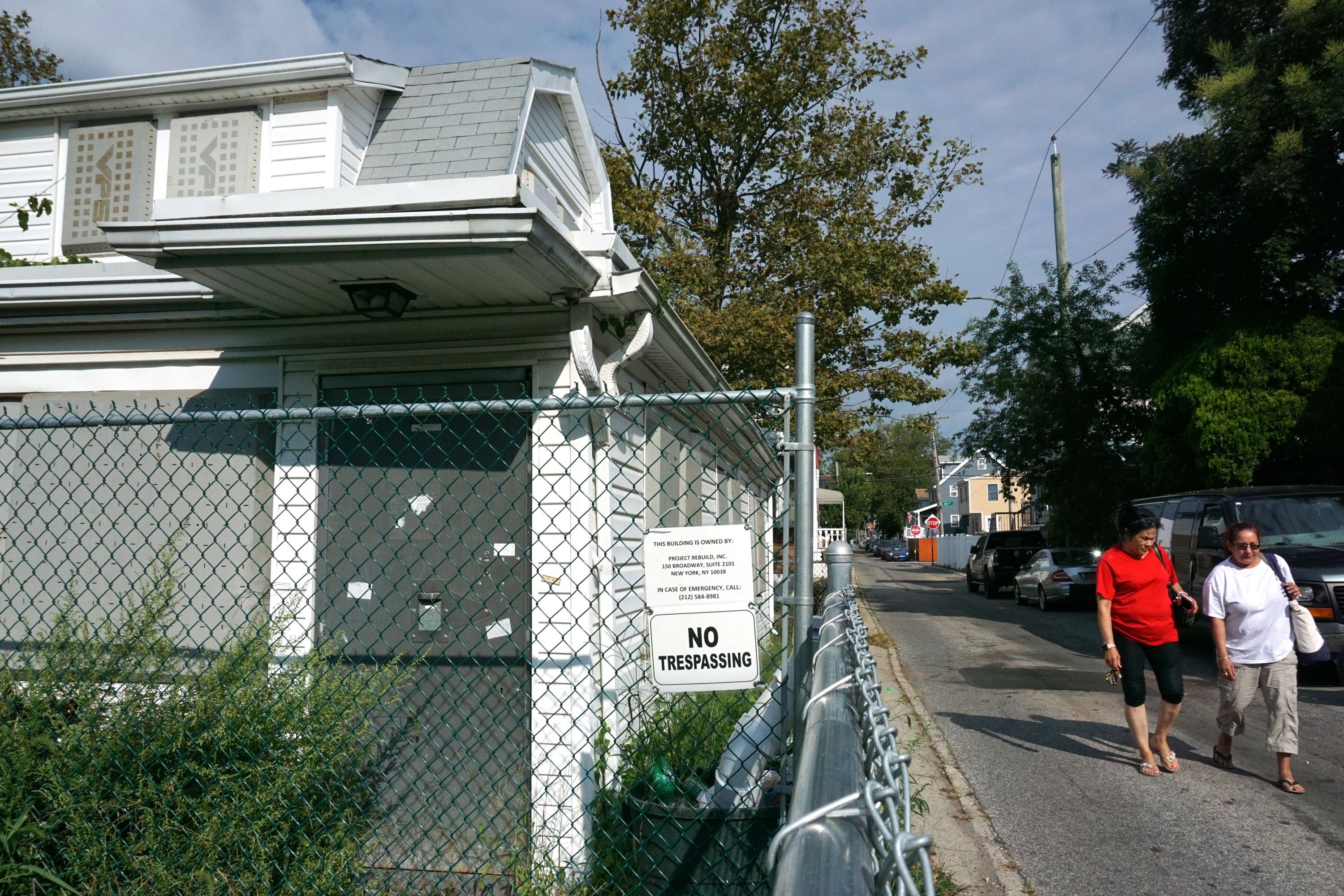New housing eyed for Brooklyn lots ravaged by Sandy

A home in Gerritsen Beach, Brooklyn, ravaged by Hurricane Sandy is part of the city’s Build it Back buyout program. Photo by Ben Fractenberg/THE CITY
 This story was originally published on Sept. 11 by THE CITY.
This story was originally published on Sept. 11 by THE CITY.
While Staten Island awaits a 4.5-mile seawall and lower Manhattan plans for a $1.3 billion berm, rebuilding is on tap for parts of Brooklyn still vulnerable to rising waters.
The city Department of Housing Preservation and Development is stepping in to spend $1.67 million in federal grant funds to buy 13 properties inundated by Superstorm Sandy in 2012. The plan: to build one- or two-family homes, elevated by at least six feet to avoid future flood waters.
